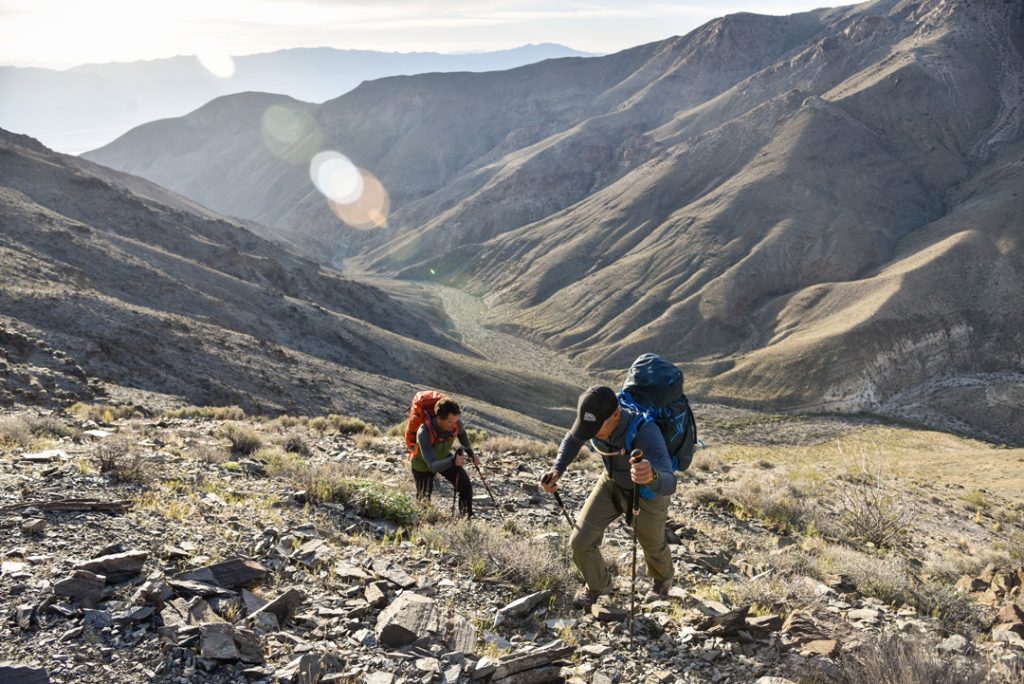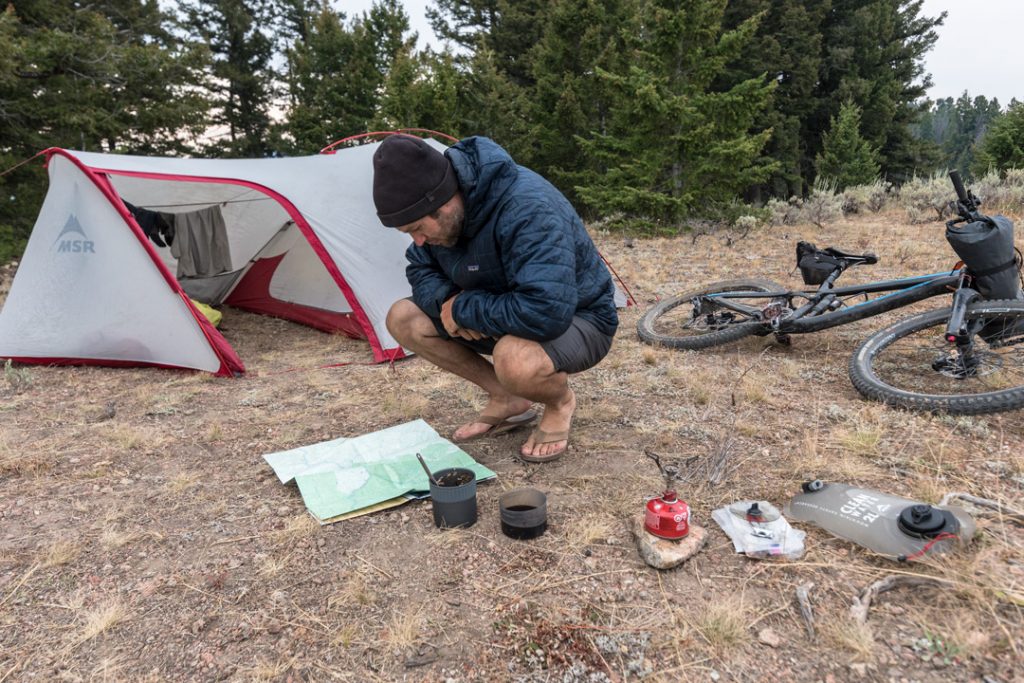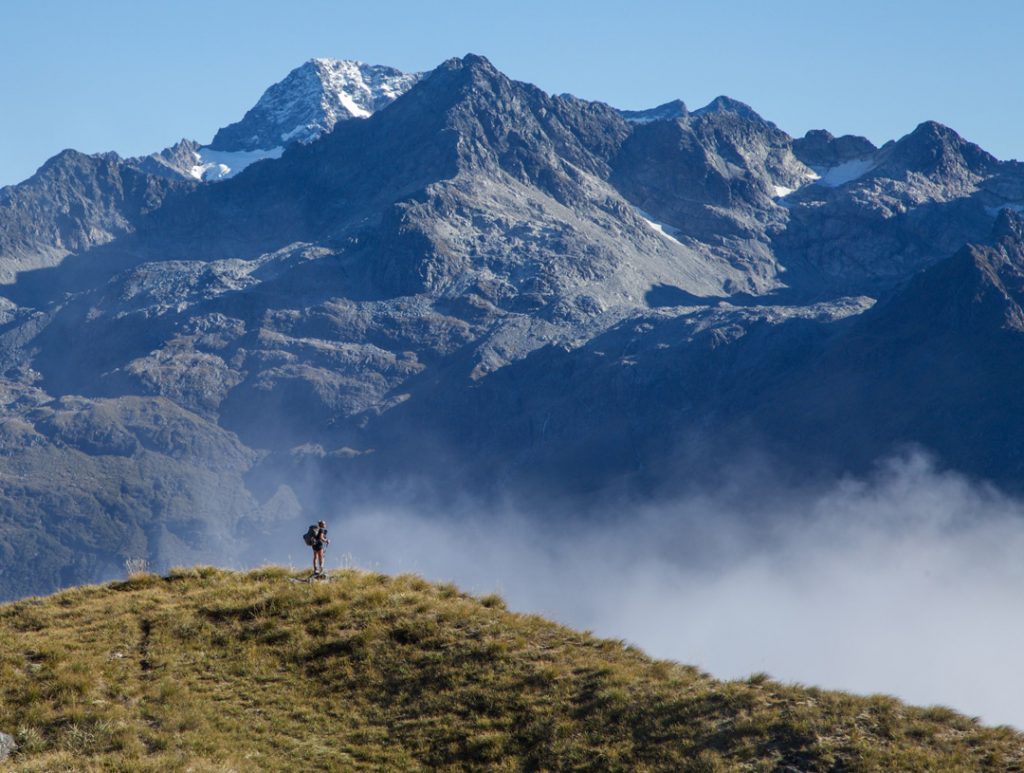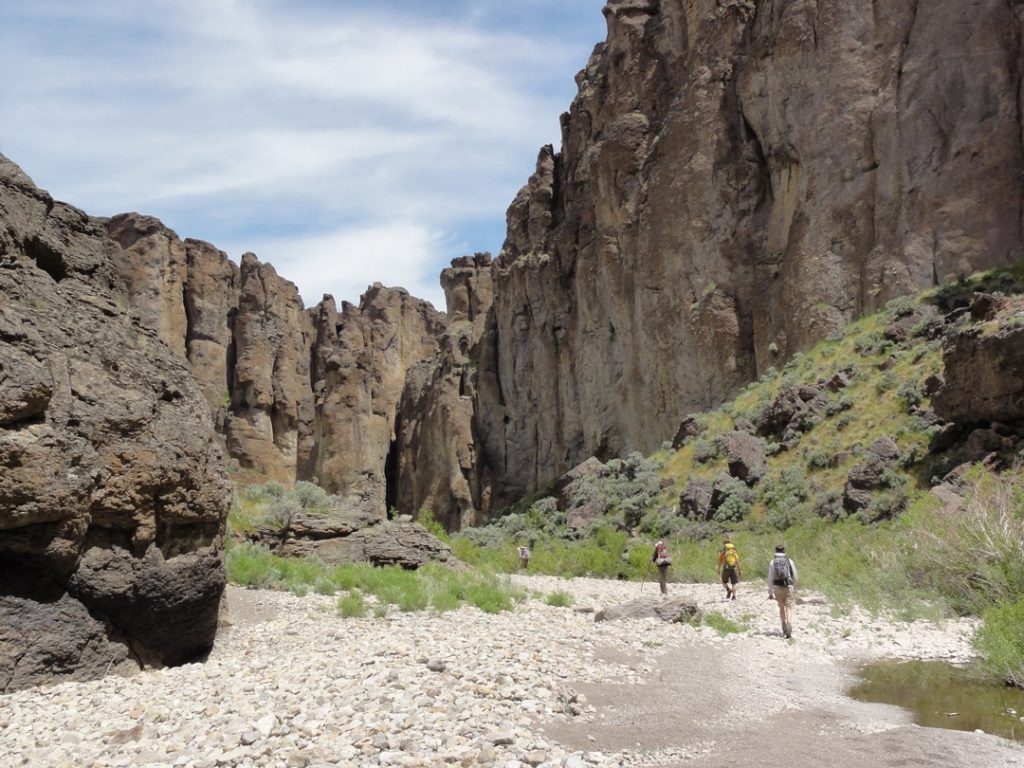Hiking a Route vs. Hiking a Trail: Part 1
By Renee Patrick, Oregon Desert Trail Coordinator for the Oregon Natural Desert Association
Let’s say you’ve already tackled a long hike like the Appalachian Trail, Pacific Crest Trail, Colorado Trail or one of the other well-established long-distance backpacking trails around the world.
Where do you go from there?
Making the leap to hiking less defined routes can provide the next big challenge.

Routes, unmarked and often undefined, offer a totally different backcountry experience, and they tap into a different set of skills. An impressive thru-hiking resume alone doesn’t prepare one for the route-finding, remote and rugged terrain, and navigational demands of a long-distance route.
Still, it’s those very challenges that can make route hiking alluring to experienced backpackers.
Developing solid backcountry navigational skills gives hikers the freedom to travel with confidence and safety when the going gets tough, and opens up the possibility of exploration beyond well-trodden trails.
I’ve slowly been building my backcountry skill-set since first setting foot on the Appalachian Trail for a thru-hike in 2002. Fast forward 10,000 miles and 16 years, and I now find myself working as the Oregon Desert Trail Coordinator (hint: it’s a 750-mile route, not a trail). One of my primary goals has been to help backpackers figure out how to successfully hike a route, so I decided to check in with some of the most accomplished route creators and hikers I know for their tips.
Liz “Snorkle” Thomas, Cam “Swami” Honan, Justin “Trauma” Lichter, Sage Clegg, and Paul “Mags” Magnanti have not only spent extended time hiking away from established trails, they all take an active role in educating hikers new to the backcountry. I’ll talk more about how to develop a good skill-set in part two of this post; for now let’s start with identifying the differences between a route and a trail, and the reasons you might want to try a route.

What’s the difference between a route and a trail?
Some of the best-known routes in the country are the Hayduke Trail, Oregon Desert Trail and Grand Enchantment Trail. Lesser-known routes include the Hot Springs Trail, Desert Trail and Northern New Mexico Loop. If they’re all just routes, why do they have “Trail” in their name?
The truth is there’s no “rule-book” defining a route versus a trail, but, if there were, some of the qualifying factors might be:
- No dedicated signage: Many routes exist only as a line on the map and a series of waypoints, not as a physical representation on the ground. These routes might tie into existing trail systems that have signage, but you won’t find any dedicated signage on most routes.
- Often no trail: Most often, the goal of a route is landscape-driven (such as hiking the length of a geological feature like the Grand Canyon or hitting as many hot springs as possible).
- Road walking is to be expected: After a challenging cross-country bushwhack, a 10-mile road walk can be a welcome prospect for its ease, a brief respite from navigation, and an efficient way to move from one section to the next.
- Navigational skills required: Established single-track trails are linear. In contrast, routes demand solid navigational skills. You must be able to read a topo map and translate the lines and symbols to what you see on the ground and vice versa. Reading a map and reading the terrain are both essential to route hiking—and finding!

The benefits of tackling a route versus a trail
- Flexibility and exploration: Hikers may find themselves sizing up the landscape and deciding to take an alternate path. They might do this to avoid deep snow, explore what looks like a cool feature on the map, catch an epic sunset, or simply to hike the shortest way to town because of a gnawing hiker hunger. Experienced hikers view routes as a suggestion of travel, and they can make small route adjustments as they hike, making for a highly flexible and personalized experience in the backcountry. Instead of following a pre-determined trail, someone hiking a route can move through a landscape in the most efficient way. Mags explains, “You are no longer on a crowded trail but are truly immersed in the backcountry.”
- It can take a lot longer: Hiking off-trail can take much longer to tick off the miles than on an established path. “Time spent in all types of conditions (e.g., snow, bushwhacking, mud, boulder hopping, swamps, soft sand, flat easy terrain, etc.) will teach you how fast (or slow) you can hike in any given environment,” Swami says.
- No “one way” to hike a route: When appropriate, route travelers also have the freedom to choose how to travel through a landscape. Sage was the first hiker to complete the Oregon Desert Trail (ODT) in 2013, but she did so on a bike as well as on foot. Likewise, I’ve known hikers to packraft part of the Hayduke Trail on Utah’s rivers, and I paddled a “water alternate” on the 140-mile Owyhee River when completing the ODT a few years ago.
- Opportunity for deeper engagement: Hikers need to pay attention, really pay attention, to their surroundings to be successful on a route. That heightened level of attention allows for a deeper engagement with the landscape and ecosystem around you. You could carry a plant guide and spend some time learning about all the flowers you keep stepping around, or perhaps carry some reading material about the Native Americans that used to travel the same ground thousands of years ago.
- Anyone—including you—can make a route: “I don’t have any specific formula or preferences when creating a route,” Swami says. “Sometimes I look for pure wilderness experiences. Other times I’m drawn by historical, cultural and culinary elements.” Snorkle has become an expert at creating urban routes, where she hikes a path through a city and makes a point to visit local breweries, bakeries, and other points of interest. Creating routes like this might sound a bit arbitrary, but the only way to experience off-the-beaten-track places is to get, well, off the beaten track.

Important considerations for hiking a route
- Routes aren’t appropriate everywhere: “Be ready for some Type 2 fun. Bushwhacks can be miserable at the time, but in retrospect they make good memories,” Trauma advises. Trees can play a big role in whether a cross-country section is doable or not. Cross-country in a heavily forested area can be extremely difficult if the vegetation is thick, or down trees create huge obstacles. Likewise, I learned cross-country hiking in southern Arizona can be next to impossible. It wasn’t for the trees, but the cacti. I tried to hike what looked like a fairly straightforward short cut, but after 30 minutes I had covered only 30 feet of desert terrain. I turned around, having already lost a fair amount of blood to the thick stands of Cholla and other various kinds of cacti.
- Route ethics: Hiking off-trail can be empowering, but be sure to use common sense and practice good ethics when deciding if you should leave the trail. Mags has some great tips including: respect local regulations and rules for the area you are hiking through, keep group sizes small, and spread groups out to avoid tramping down a trail. Heavily impacted areas or high alpine zones are usually not the best terrain to explore off-trail because established trails provide an important way to consolidate use in sensitive areas.
I’ve heard it said that true adventure is when you are uncertain of the outcome. That is certainly true of routes when they have so many variables, but I would add that the key to a successful adventure is making good decisions. This includes carrying the 10 essentials and adhering to all of the safety precautions you’d normally take—plus more.
In part two I’ll cover tips from our seasoned hikers to help you acquire the skills to make those good decisions so that you can hike these routes or start making some of your own.
